
When you are as involved in movies as I am, you spend a lot of time thinking about genre. While, initially, a genre can be seen as a way to classify movies, the more I consider it, the more I begin to see genre not only as a label but as a template for constructing a film. It isn’t simply a section in a blockbuster movie rental store (if those still existed), but a set of loose guidelines for the filmmakers to follow.
While these guidelines do help to set a path for movie creators to go down, after a long enough time of the genre’s existence, these elements of genre become restrictions. Because of this, many genres can go through phases of creative stagnation, where everything seems to be following the same formula, and nothing original is being released.
So, what can be done about such genre-based limitations? Well, there is the obvious: make something that pushes the boundaries of the genre. This would be what Star Wars did for science fiction. Instead of the polished and dream-like science fiction of the time, Star Wars gave us a lived-in, grungy world making it more believable while still having fantasy elements.

However, pushing the boundaries of genre is not the only way to overcome a lack of genre originality. Another way that filmmakers have done this is by combining two separate genres. One of my favorite combinations is the horror-comedy. The fusing of these two genres has brought about such greats as Shaun of the Dead, Scream, and Parasite, which I will be focusing on today.
What Genre is Parasite?
Parasite is the 2019 Korean film directed by Bong Joon Ho. If you have not seen it, then you might recognize the title from the 2020 Oscars where Parasite was the first non-english language film to win Best Picture along with three other Oscars.
As I said, Parasite could be labeled as any number of genres, such as comedy, drama, satire, thriller, or horror (spoilers start here). However, I believe that the midpoint of the film offers an overall shift tonally and in terms of genre. While the first half of the film is a comedy with a more light and fun tone, the second half shifts tonally into the dark and sometimes dangerous feeling of a classic horror film.
While some movies take their time shifting the tone, Bong Joon-ho had a different plan for Parasite, in which he completely changes the mood, plot, and character goals in one singular scene.
Changing the entire film genre in one scene is difficult, to say the least; however, when I first watched the Parasite, I did not consciously recognize the subtle changes Bong Joon-ho was making. Because of how seamlessly this midpoint scene works, I want to examine it to understand better how the film is slowly flipped on its head.
However, before we can get to this particular scene, we must first understand how the characters arrive there in the film.
The Comedy-Satire
The protagonists of the film are the Kim family, who are in the lower class and must fold pizza boxes to make a living and steal wifi from nearby businesses. The family is made up of the young adults Ki-jung and Ki-woo (played by Park So-dam and Choi Woo-shik) and their parents Ki-taek and Choong-sook (Played by Kang-Ho Song and Jang Hye-jin.)

The inciting incident of the film comes when Ki-woo’s friend (played by Park Seo-joon) offers to have Ki-woo take over for him as an English tutor to the daughter of the wealthy Park family. From there, Ki-woo tricks the Parks into hiring his sister and parents as an art instructor, driver, and housekeeper, respectively, without knowing that they are related.
This is what takes up the entire first half of the film, and the tone is lighthearted and fun throughout. This tone reaches a fever pitch when the Park family leaves for a camping trip, and the Kim family take over their lavish house for a weekend. This scene is filled with vignettes of the Kim’s lounging around the Park home, showing Ki-jung watching television while sitting in a bathtub, Ki-woo laying on the trimmed lawn, reading a book and their parents napping on the living room sofa. Everything is going fantastic for the Kim family; however, subconsciously, the audience can see that this heightened stasis cannot last.
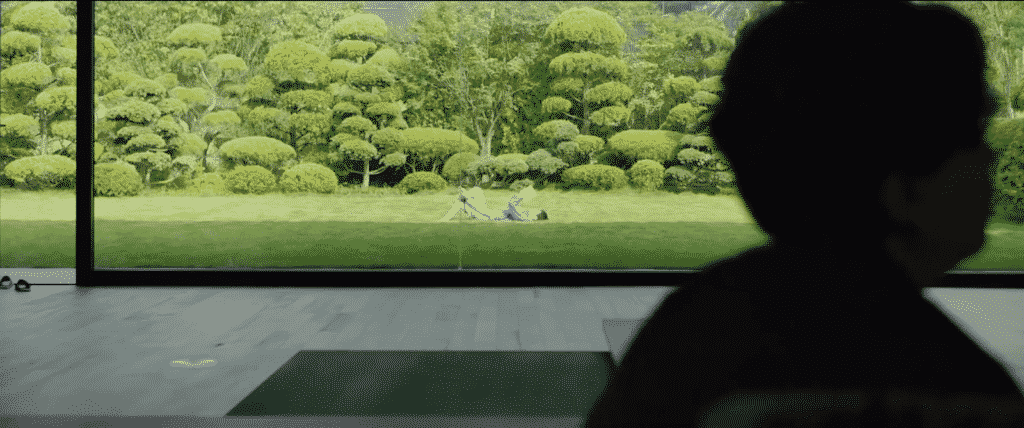
The movie is only halfway done, meaning that there needs to be a new conflict introduced to our characters for the story to continue. However, the audience is unsure of what this conflict will be; that is, until the doorbell rings.
Somebody at the Door
The culmination of the montage mentioned above is a nighttime scene of the family drinking in the living room of the Park family home. In this scene, they have all of the bottles of alcohol that the Parks own out on their coffee table. It is later on in this scene when Ki-taek, the father, pushes all the bottles off of the table, breaking them on the floor as a joke. At this point, the living room is a complete mess.

While Ki-taek breaking the bottles is not in and of itself suspenseful, it will come into play in the later suspense of the scene. The Kim’s are on top of the world. Their plan worked and they are now living a happier life because of it. However, the first hint of the changing tone comes when the doorbell rings. When they check the door, it is the maid that used to live at the house asking to come in. She looks injured and disheveled and is urgent to get inside, saying she forgot something in the basement. The maid is laughing in an unhinged and unsetting way.
This ratchets up the tension because if they let her in, there is a chance that she will catch the family living there, learn their secret and cause them to lose their jobs, or worse. What is so brilliant about this scene is that the audience already knows what the stakes are, those stakes being the rest of the family living in the home being caught. However, this is just the first of many layers of suspense this scene will have.
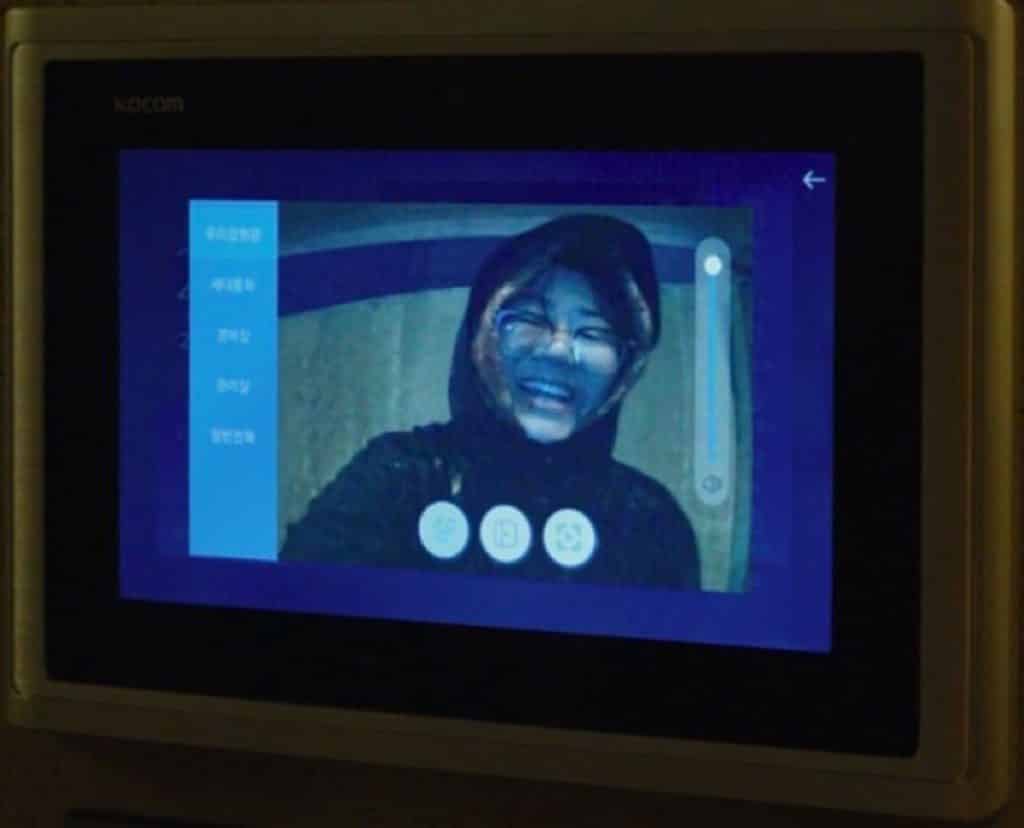
When I saw this film in the theaters, I remember that throughout this scene, murmurs of unease began popping up all around me as the audience members got more and more stressed by the movie.
So the rest of the family hides, and the mother lets the maid into the basement, the maid remaining unaware of the other three family member’s presence. Choong-sook, the mother of the family, asks her what is in the basement as she heads towards the dark doorway leading to it. The maid (played excellently by Lee Jeong-eun) turns back to her and eerily says, “want to come down with me” while still laughing in an unusual and frightening way.
In the theater, this is where the murmurs of unease began to grow, which is a testament to how talented Bong Joon-ho is as a director. While nothing explicitly scary or bad has happened on screen, because of the scene’s context, the viewer understands that something is off about this film, and a tonal shift is beginning to occur.
In the Basement
The maid goes into the basement, and the mother is waiting in the kitchen until her son, who is still hiding, tells her to go into the basement after the maid. The moment Choong-sook enters the basement and sees the maid is the moment that in the theaters that I knew this movie was changing. The maid is propped up between two shelves, with her legs pushing against one and arms against the other. However, it is the way that she is doing this that is the most unsettling, because she is a few feet off of the ground, and is grunting because of how hard she is trying to push this shelf.
While Parasite is a fairly grounded and plausible film, I can’t help but think that Bong Joon-ho intended to evoke images in the mind of the viewer of more decided horror films in which the monster or creature climbs walls in inhuman ways. Films such as Split, Hereditary, or The Babadook.
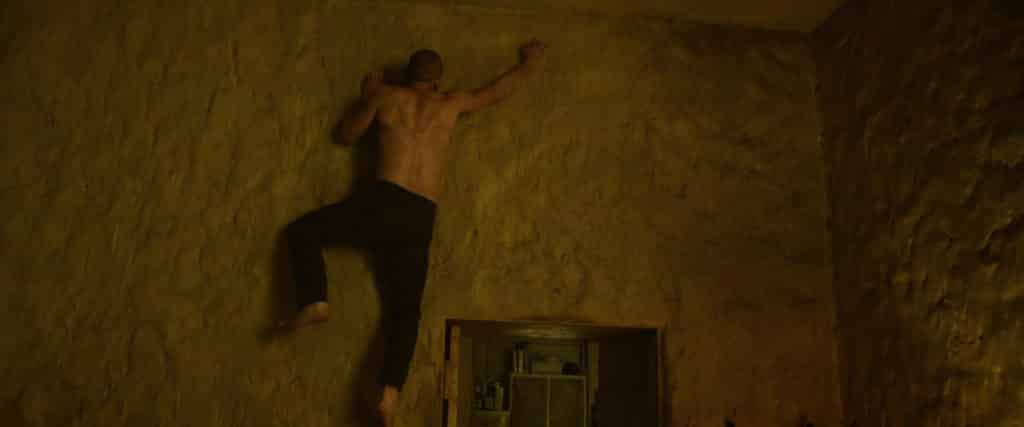
However, aside from the merely visual, this is fear inducing also because of the questions that arise from it. The obvious main questions being “what is she trying to do?” And “how will this affect the characters we have come to care about?”
However, the former is answered quickly because with the help of Choong-sook, the maid is able to move the shelf, exposing a passageway behind it.
What They Find
The maid runs down this green passageway, and the mother follows. In the covered up bunker below the house, they find the husband of the maid, who has been secretly living there. From there, the maid finds out the family’s secret (that they are a family scamming the Parks) and threatens to tell the Park family, thus gaining the upper hand. From the bunker, they all ascend to the living room of the Park home.

In the living room, the Kim’s are held hostage by the Maid and her husband. When the mother sees an opportune moment, she attacks the couple, turning the hostage situation to an all-out brawl, with the Kims as the winners.
This is the scene that Bong Joon-ho has set up. There is the entire Kim family living in the Park home when they should not be, the home itself is a mess with the living room covered in broken bottles and glass and the maid and her husband threatening to expose the Kim family’s secret while they try to restrain them in the living room. It is into this chaotic scene that Bong Joon-ho is able to twist the knife of stress he has impaled the audience with, and how does he do that? He rings the phone.

When the mother has quieted everyone, she answers the phone to hear from Mrs. Park, asking her to get a meal ready for her son and informing her that they should be home in eight minutes.
While re-watching this particular scene of the film, I couldn’t help but think of Alfred Hitchcock’s 1948 film Rope. As anybody who loves Hitchcock knows, the master filmmaker made movies that, while not always being classic horror, featured scenes of extreme suspense. The idea for the movie Rope is ingeniously simple; two men kill an associate of theirs by strangling him with a rope. Once they have done this, the two men hide the body in a wooden trunk, then host a party at their home, with the trunk in the center of the party, used to display their food. The suspense of the film was, of course, generated from the fear of the guests finding the body.
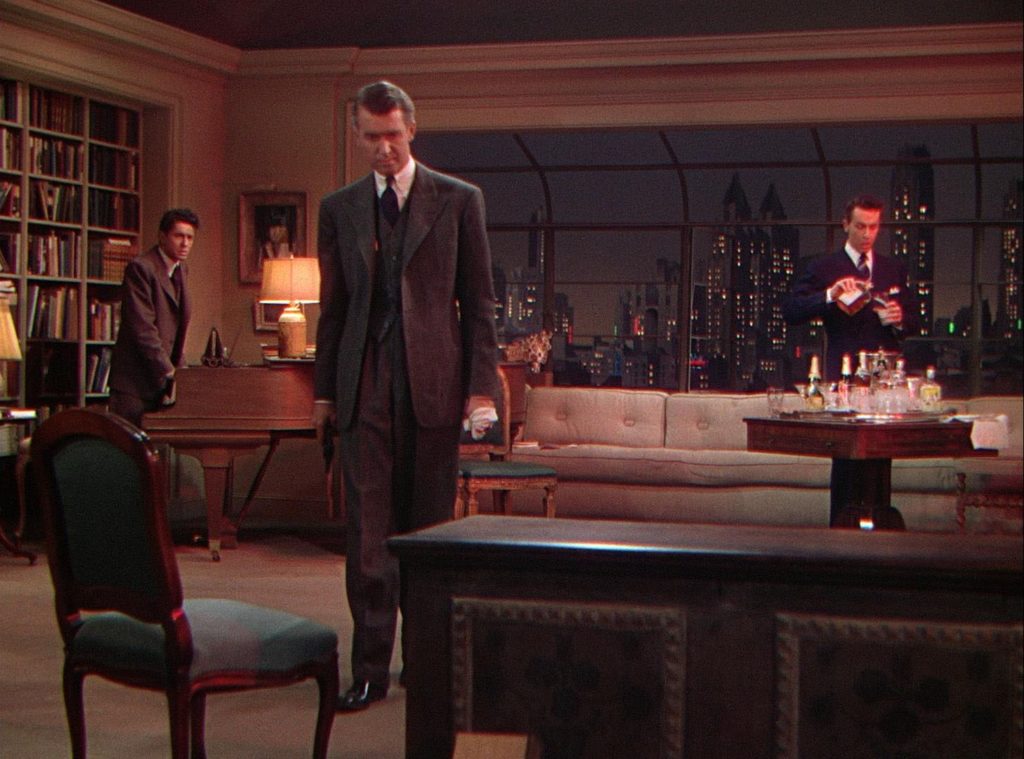
I have no idea if Rope or any other Hitchcock films was one of Bong Joon-ho’s inspirations for Parasite or this particular scene. However, the sequence that follows the ringing of the phone feels similar to Rope, only instead of a dead body there is the living maid and her husband, along with the rest of the Kim family, the mess which they have made, and the secrets that they are hiding.
Suffice it to say that the rest of the scene is one of the most stressful and well executed scenes of suspense I have ever seen in theaters, and it does an excellent job of paving the way for the horrors to come.
What Does it Mean to be a Horror Movie
In any form of art, definitions are hard to make and rarely agreed upon. This is because a definition in and of itself is a form of restriction. When you define something, you are giving it a label, and therefore, telling any artist working within that genre that their work must fit into it. However, it is in our human nature to want to give things names and labels.
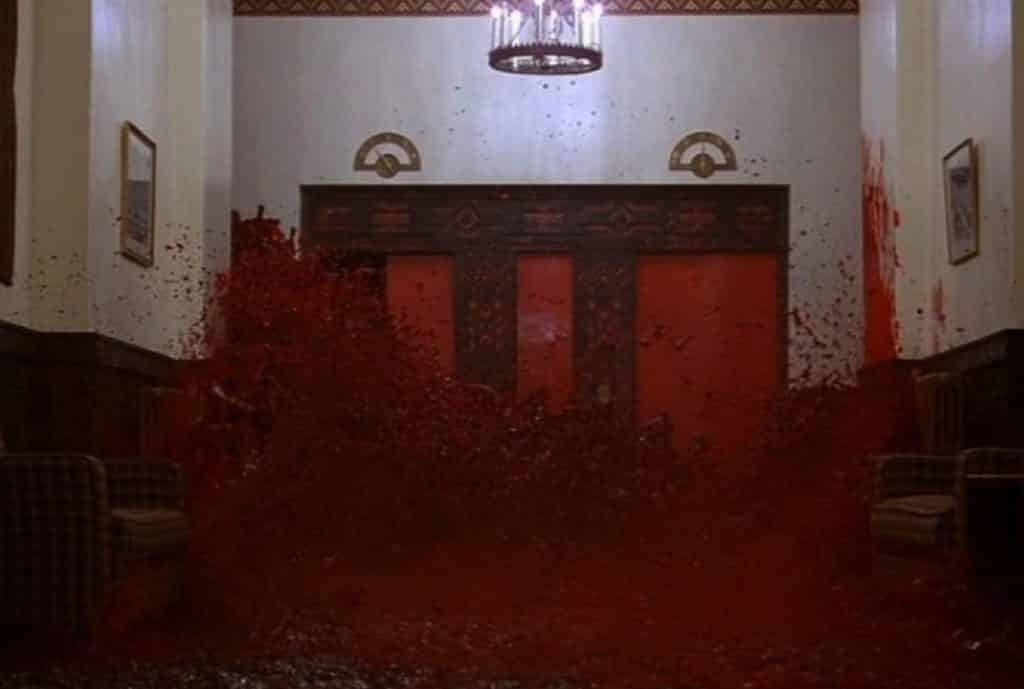
I do not think that there can ever be one perfect definition for what it means to be a horror movie. However, to me, one of the most basic and obvious factors that differentiates horror from other movie genres is that horror film’s characters are driven by fear. This may be the fear of being killed by the murderer, fear of being possessed by the demon, or fear of losing what they have gained as is the case in Parasite.
The introductory half of Parasite features character’s in pursuit of a goal, a goal which they are able to attain. These are characters who are driven by the desire to succeed. However, once the scene in question occurs, the drive for the characters changes. These are no longer people driven by the desire to gain and succeed, they are people driven by the fear of losing what they have already won, and it is that very fear that allows Bong Joon-ho’s Parasite to become a horror film.
Fantastic article!
Parasite was such an insane movie, great breakdown!
What! This was so cool! Parasite is my favorite movie! WAT WAT WAT